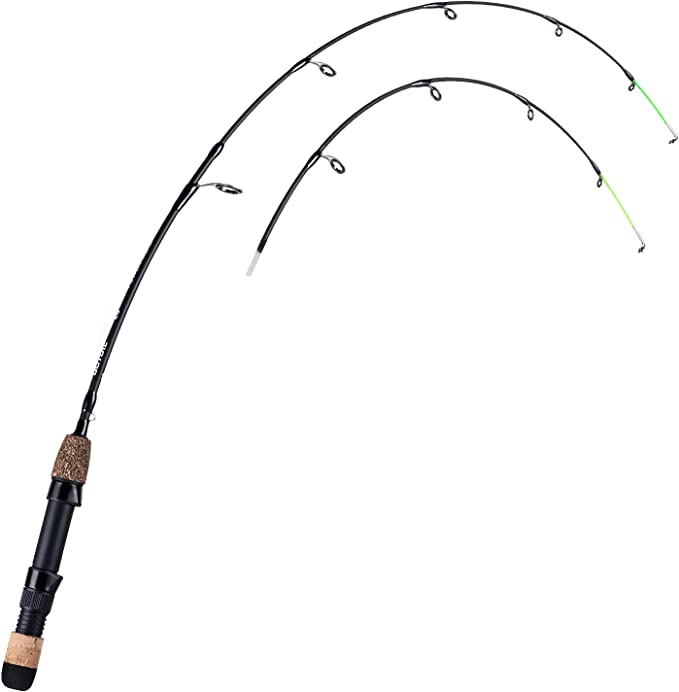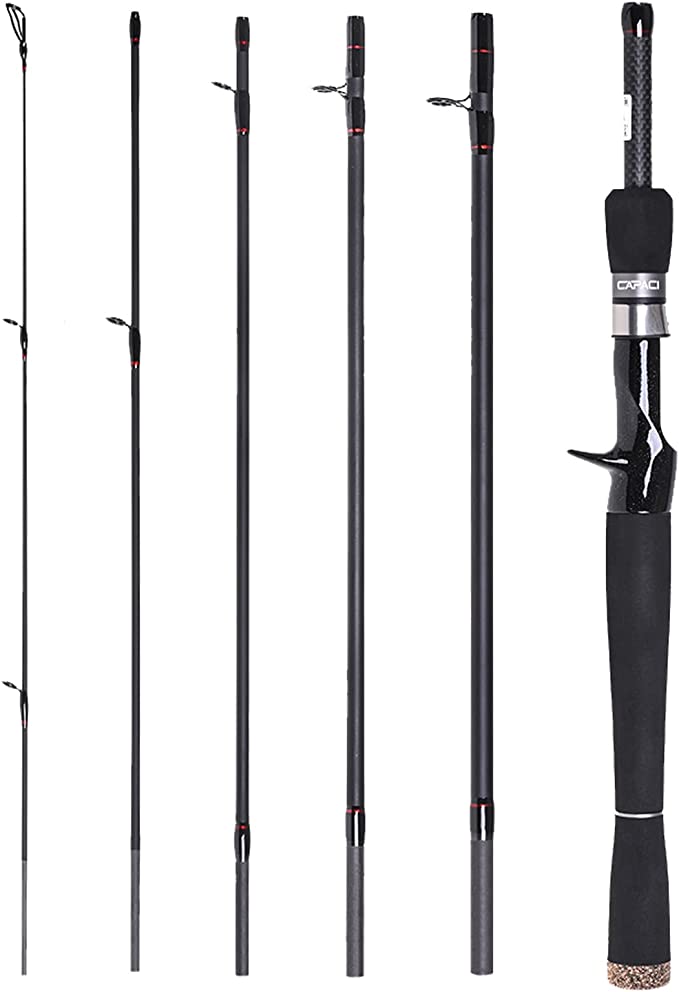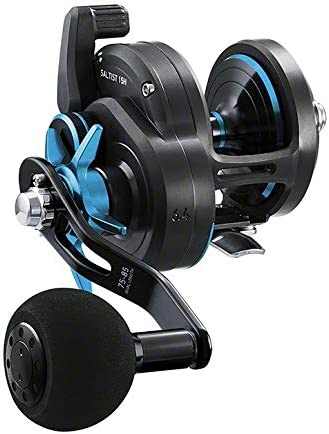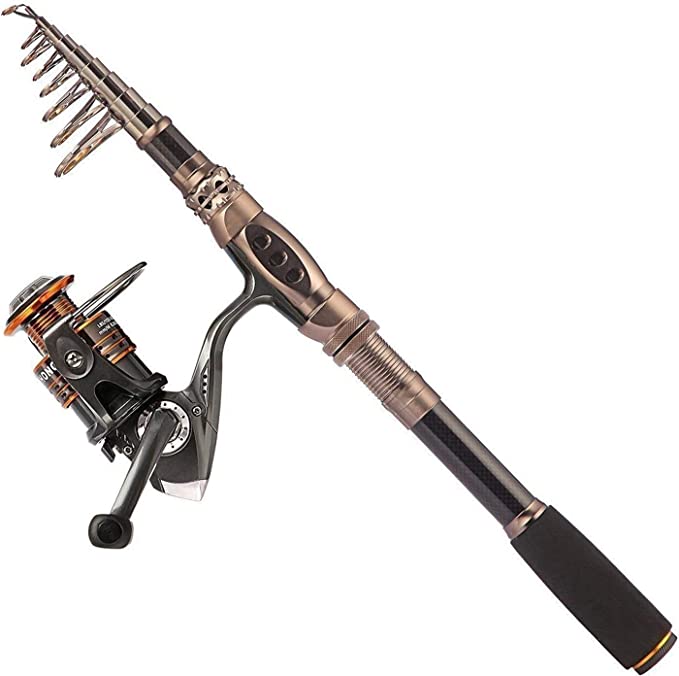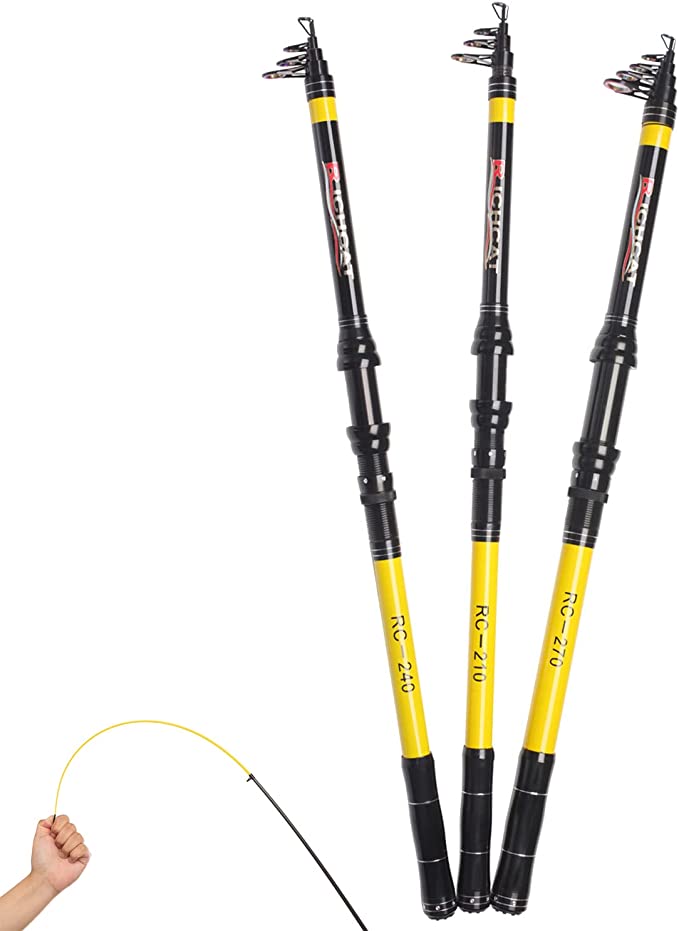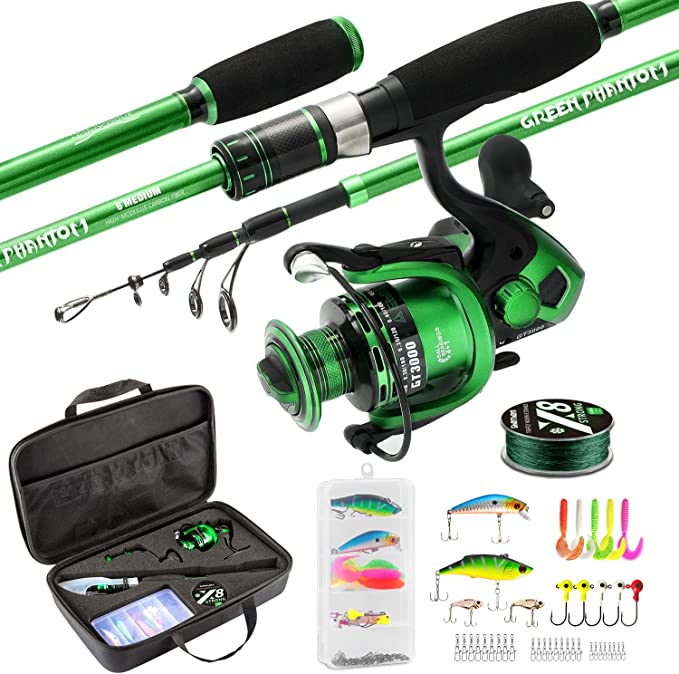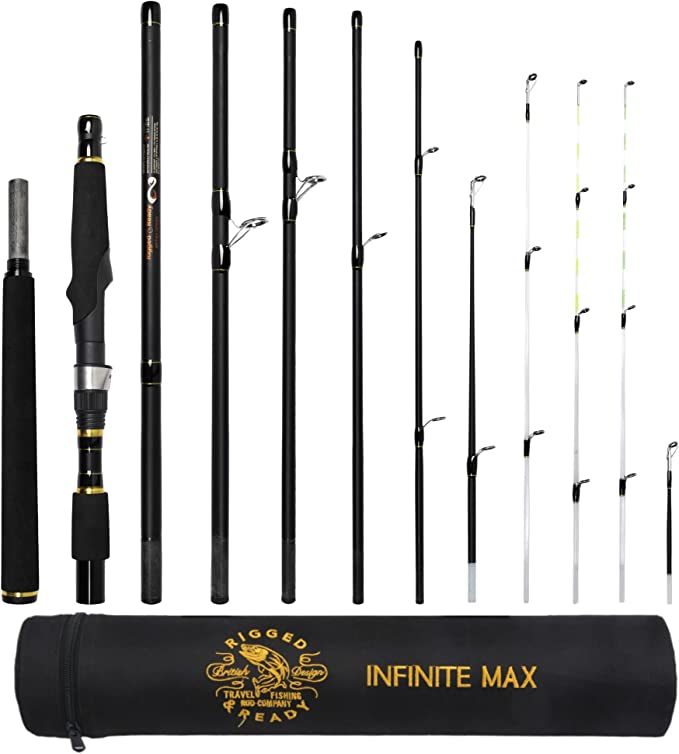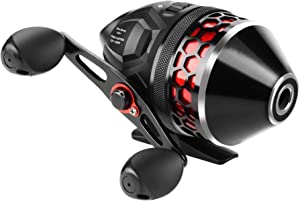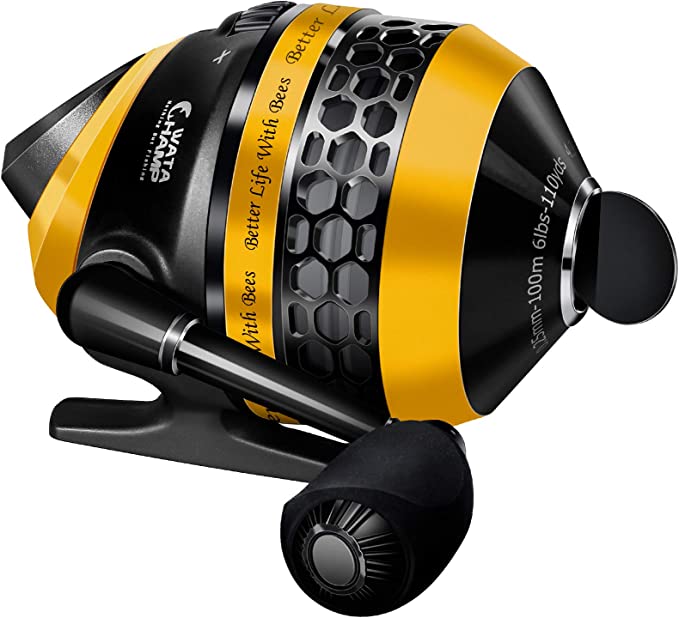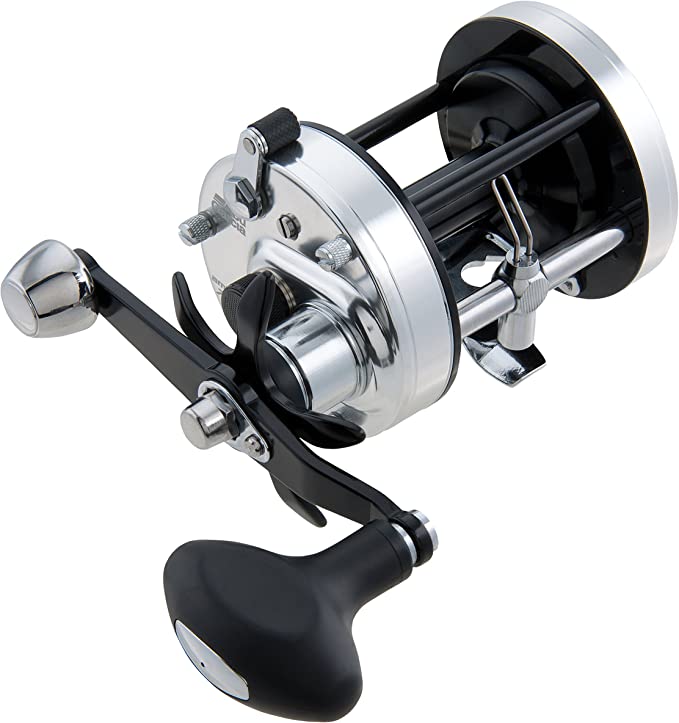The Angler's Dilemma: Deconstructing the Science of the KastKing Konvert Twin Tip Ice Rod
Update on Aug. 1, 2025, 9:54 a.m.
You’re on the ice. The world has shrunk to the diameter of your hole in the frozen water, a portal to a silent, green world below. The stillness is absolute, broken only by the whisper of the wind. In your hands, a rod—your antenna to the unseen. Every subtle tap, every slight increase in tension, is a message. But what is the message, and who is the sender? Is it the delicate peck of a bluegill, requiring a finesse presentation and a soft touch? Or is it the solid weight of a cruising walleye, demanding a powerful and immediate response?
This is the ice angler’s eternal dilemma. All too often, the rod in hand is perfect for one scenario, and hopelessly inadequate for the other. This challenge, however, is not just a matter of luck; it’s a question of physics and engineering. It’s a question that a tool like the KastKing Konvert Twin Tip Ice Rod, with its unique interchangeable design, allows us to deconstruct, revealing the profound science behind what makes a fishing rod work.
The Physics of Versatility: A Tale of Two Levers
At its core, a fishing rod is a simple machine: a Class 3 lever, where the effort (your hand) is applied between the fulcrum (the butt of the rod against your body) and the load (the fish at the other end). But within this simplicity lies immense complexity, governed by two key terms: Power and Action. The genius of an interchangeable tip system is that it allows you to fundamentally alter these physics on demand.
The Konvert comes with two tips: Medium (M) and Medium Light (ML). This “Power” rating is a direct measure of the rod’s resistance to bending—its stiffness. Think of the ML tip as a sensitive, flexible lever. It requires very little force to bend, which means two things: it can load and cast very light jigs effectively, and more importantly, it visually telegraphs the faintest bites from panfish. That subtle inhalation from a crappie creates a pronounced, unmissable curve in the ML tip.
Switch to the Medium power tip, and you’ve picked up a different tool entirely. This stiffer lever offers more resistance. It won’t bend as easily under the light tap of a small perch, but when a 3-pound bass takes the bait, it has the structural integrity—the “backbone”—to drive the hook point firmly into a hard, bony mouth. This is pure physics: to generate the necessary hook-setting force over distance, you need a lever that won’t waste your energy by simply folding in half. Choosing between the two tips is not just a preference; it’s a calculated decision about the specific mechanical job you need your lever to perform.
The Soul of the Rod: A Duel of Materials
What gives a rod its power and sensitivity? The answer lies deep within its material composition. The Konvert series offers a choice between two classic materials, each with a distinct personality born from its molecular structure: IM6 Graphite and 100% Fiberglass.
IM6 Graphite is the material of sensitivity. Its defining characteristic is a high modulus of elasticity. In simple terms, it’s incredibly stiff for its weight. Imagine striking a tightly stretched guitar string versus a loose rubber band. The guitar string vibrates instantly and for a long time. This is analogous to a graphite blank. It transmits the high-frequency vibrations of a subtle bite or your lure ticking across a rocky bottom with incredible efficiency and minimal damping. The energy travels up the blank and into your hand as a crisp, clear signal. This is what anglers mean when they say a rod “has feel.”
100% Fiberglass, on the other hand, is the material of toughness. It has a lower modulus but a far greater elongation-to-failure point. It’s the rubber band to graphite’s guitar string. It bends more deeply and can absorb far more energy and impact before fracturing. While it may dampen the lightest vibrations, its value becomes undeniable when the unexpected happens. One angler’s report of landing several catfish up to four pounds on the ML glass tip is a perfect testament to this property. A graphite rod under that much sudden, surging pressure might have reached its breaking point. The glass rod, however, bent, absorbed the shock, and distributed the load throughout its length, tiring the fish out. It sacrifices ultimate sensitivity for rugged durability—a trade-off many anglers are happy to make when larger, more powerful fish are in the mix.
The Anatomy of a Bite: Translating Touch and Sight
Detection is a sensory game. An effective ice rod must translate the invisible events below the ice into signals our brain can process. It does this in two ways: through our sense of touch and our sense of sight.
The tactile feedback, as we’ve seen, is the job of the rod blank material. But sight is arguably more critical in ice fishing, where bites can be mere “lifts” where the line goes slack. This is where the rod’s bright, chartreuse strike tip becomes more than just a cosmetic feature—it’s an optical instrument. Its effectiveness is rooted in the physiology of the human eye. Our eyes’ daylight-sensing cone cells are most sensitive to light in the 550-nanometer wavelength range, which corresponds almost perfectly to the color chartreuse or lime green.
This means that against the high-contrast backdrops of white snow, dark water, or the dim interior of a shelter, this specific color appears brighter and commands more attention than any other. The rod’s design cleverly places this high-visibility color on the most flexible part of the blank, transforming a minuscule physical displacement into a loud, clear visual alarm. It’s a brilliant piece of bio-hacking, turning a whisper of a bite into a visual shout.
Engineering in the Extreme: Design Meets Reality
A great tool is one that considers the human using it and the environment it will be used in. The Konvert rod incorporates several features that show a deep understanding of the ice angler. The use of a rubberized cork handle, for instance, is a deliberate choice. Cork has a very low thermal conductivity, meaning it doesn’t suck heat from your bare hands as quickly as plastic or metal would—a small but significant comfort in freezing temperatures.
The rod’s ability to break down to under 17 inches makes it exceptionally portable. But this modularity also introduces an engineering reality: manufacturing tolerances. Some users note that the connection point, or ferrule, can occasionally rotate. This isn’t necessarily a defect, but rather an inherent trade-off in any multi-piece design. Achieving a fit that is both easily assembled in the cold and absolutely immovable would require a level of precision that could dramatically increase cost. It’s an honest compromise between versatility, portability, and price point. The inclusion of a hard travel case acknowledges this, providing crucial protection for the multi-piece system.
Ultimately, the KastKing Konvert is a fascinating study in purpose-driven design. It demonstrates that a fishing rod is not a passive stick, but an active tool of translation. It translates your intent into lure action, and it translates the underwater world into physical and visual signals you can understand. By integrating the principles of leverage, the distinct personalities of materials, and the science of human perception, it offers a versatile solution to the angler’s dilemma. Understanding the “why” behind its design doesn’t just make you appreciate the tool more—it makes you a more thoughtful and effective angler.
